Are you curious about How To Tell If A Pokemon Card Is Worth Money? At money-central.com, we help you understand the factors that determine the value of your Pokemon cards, turning your childhood collection into a potential treasure trove. Identifying valuable Pokemon cards involves assessing rarity, condition, and unique characteristics that drive up their worth. Let’s delve into the criteria and strategies to unlock the financial potential of your Pokemon cards.
1. What Determines the Value of a Pokemon Card?
The value of a Pokemon card hinges on two key factors: rarity and condition. A card’s worth is determined by its scarcity and the state it’s in, impacting its collectibility and market demand.
1.1. Pokemon Card Rarity
The rarity of a Pokemon card is a primary factor in determining its value. Collectors highly prize rare cards due to their limited availability, which drives up their market price.
- Rarity Symbols: Look at the bottom corner symbol; a circle means common, a diamond indicates uncommon, and a star signifies rare. Alternate color stars denote ultra-rare status.
- First Edition: Cards with a “1st Edition” mark are from the initial print, boosting their value due to their limited number and historical significance.
- Holographic (Holo) Cards: Holographic versions often command higher prices because of their visual appeal and relative scarcity compared to non-holo versions.
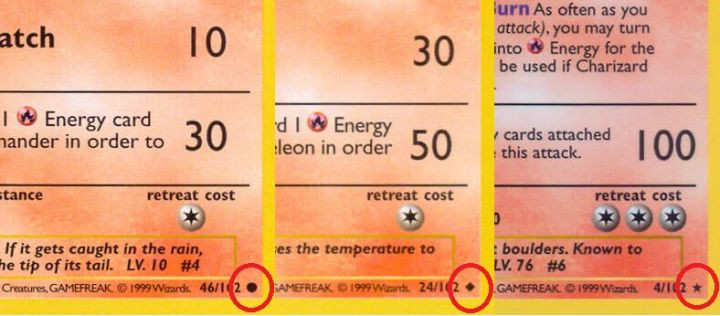 Rarity symbols on Pokémon cards indicating common, uncommon, and rare
Rarity symbols on Pokémon cards indicating common, uncommon, and rare
Rarity symbols on Pokémon cards indicating common, uncommon, and rare.
1.2. Types of Rare Pokemon Cards
Over the years, Pokemon has introduced new card types that stand out with unique designs and features. These cards are instantly recognizable, making them highly sought after by collectors.
- Pokemon EX, GX, and V/MAX: These cards feature holographic art that covers the entire card, setting them apart.
- Full Art Cards: These cards have expanded artwork that extends across the entire card surface, enhancing their aesthetic appeal and value.
- Rainbow Rare Cards: Known for their unique rainbow-colored holographic effect, these secret rare cards are particularly desirable.
- Shiny Cards: Cards featuring alternate color schemes of the Pokemon are highly prized for their rarity and visual appeal.
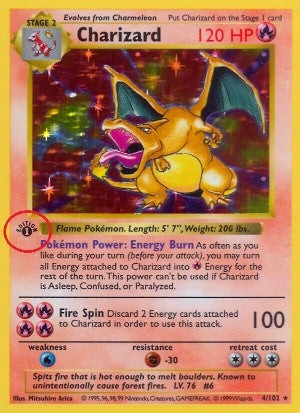 An example of a Pokémon card with the first edition mark indicating its early print status
An example of a Pokémon card with the first edition mark indicating its early print status
An example of a Pokémon card with the first edition mark indicating its early print status.
1.3. How to Identify a Specific Pokemon Card
For those new to the hobby, navigating the different types of Pokemon cards can be overwhelming. An effective way to identify your card is by using the set number located in the bottom corner.
- Set Number: This number can be used in online searches to quickly identify the card and its specific characteristics. Websites like TCGPlayer and Bulbapedia can help.
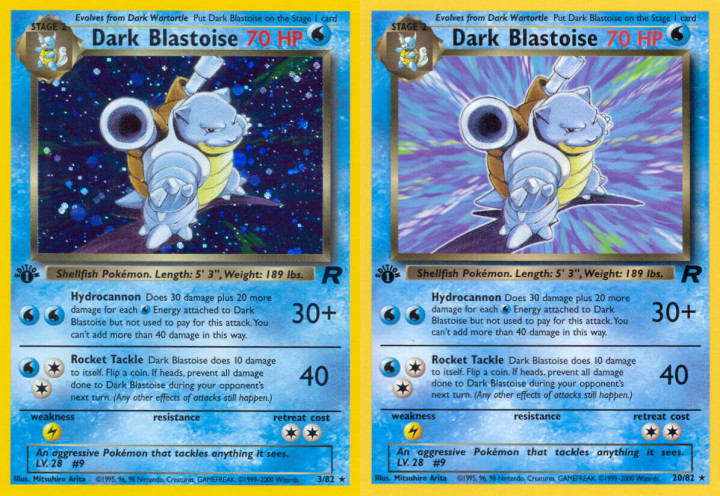 Comparison of holographic and non-holographic Pokémon cards, highlighting the difference in visual appearance
Comparison of holographic and non-holographic Pokémon cards, highlighting the difference in visual appearance
Comparison of holographic and non-holographic Pokémon cards, highlighting the difference in visual appearance.
1.4. Factors Increasing Card Value
Besides rarity symbols, other elements can significantly increase a card’s value. Popular Pokemon and usability in the game can affect market demand.
- Popular Pokemon: Cards featuring iconic Pokemon like Charizard, Pikachu, and Mewtwo often see higher demand.
- Usability in the Game: Cards that enhance gameplay strategies are typically more valuable among players and collectors.
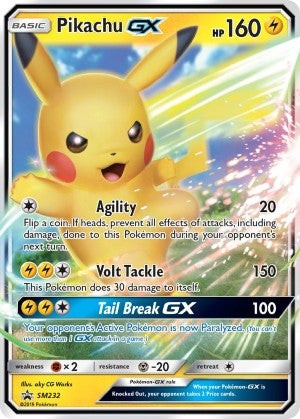 Example of a Pokémon GX card featuring a full holographic design
Example of a Pokémon GX card featuring a full holographic design
Example of a Pokémon GX card featuring a full holographic design.
1.5. Limited Edition Cards
Limited edition cards are highly valued due to their exclusivity and scarcity. These cards are often distributed at special events, tournaments, or through contests, making them rare collector’s items.
- Event Exclusive Cards: These are only available by attending specific events.
- Tournament Prizes: Awarded to top performers in tournaments, signifying skill and exclusivity.
- Contest Entries: Given as prizes in contests, enhancing their uniqueness and desirability.
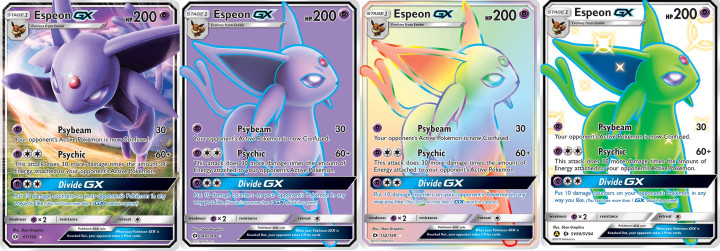 Visual comparison of different rarities including standard, full art, rainbow rare, and shiny versions of a Pokémon card
Visual comparison of different rarities including standard, full art, rainbow rare, and shiny versions of a Pokémon card
Visual comparison of different rarities including standard, full art, rainbow rare, and shiny versions of a Pokémon card.
1.6. What to Do With Common Cards
It’s normal for most cards to not be worth much individually. Common cards can still be valuable when sold in bulk, which appeals to collectors looking to complete sets or use them for gameplay.
1.7. Preserving Card Conditions
To maintain the value of your Pokemon cards, proper storage is essential. Protective sleeves and avoiding direct sunlight can prevent damage.
- Protective Sleeves: These prevent scratches and handling damage.
- Avoid Direct Sunlight: Sunlight can fade the colors and damage the card over time.
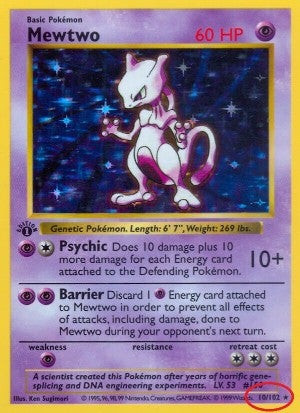 Location of the set number on a Pokémon card, used for identification and valuation
Location of the set number on a Pokémon card, used for identification and valuation
Location of the set number on a Pokémon card, used for identification and valuation.
1.8. Assessing Card Condition
A card’s condition significantly affects its value. Cards in perfect or near-perfect condition fetch the highest prices, while any flaws can decrease their worth.
- Mint/Near Mint: These cards show no wear and are in pristine condition.
- Scratches, Bends, and Tears: These are obvious flaws that significantly lower a card’s value.
- Centering and Chipping: These minor imperfections result from printing errors and can affect a card’s grade.
2. Special Pokemon Cards to Watch For
Certain unique traits can make a Pokemon card highly valuable. These features often include printing errors or limited distribution, making the cards precious to collectors. These cards require careful examination to identify, as they may initially appear similar to common versions.
2.1. Shadowless Cards
Shadowless cards are a unique subset of Pokemon cards highly prized by collectors. The term “Shadowless” refers to cards from the first print run of the Base Set, where the art box lacks a drop shadow.
- Identifying Shadowless Cards: Examine the border of your Base Set cards. If there is no shadow along the edge of the art box, the card is Shadowless.
- Value of Shadowless Cards: A Shadowless Base Set Charizard card can sell for thousands of dollars, highlighting the value of these early print cards.
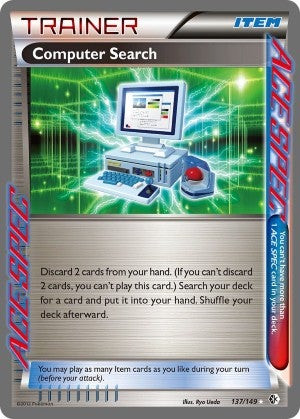 An example of a Pokémon card featuring Blastoise, used to illustrate strategy and value in gameplay
An example of a Pokémon card featuring Blastoise, used to illustrate strategy and value in gameplay
An example of a Pokémon card featuring Blastoise, used to illustrate strategy and value in gameplay.
2.2. Tournament and Promo Cards
Tournament and promo cards are distributed at special events or as promotional giveaways. These cards often have unique stamps or promo stars.
- Markings: Look for stamps or promo stars on the card’s art to identify its special origin.
- Value Variation: Some promotional cards, such as the 1999 Mew movie promo, have limited value, while others, like the 2011 and 2012 Tropical Beach card, can be worth hundreds of dollars.
2.3. Error Cards
Error cards contain printing errors, spelling mistakes, or other formatting issues that make them rare collector’s items. Even a seemingly insignificant mistake can transform a common card into a valuable treasure.
- Examples of Error Cards: A 1999 Base Set Blastoise card missing the word “Stage” is known as “Stage Error Blastoise” and can be worth thousands.
- How to Check for Errors: Check your collection for misprints, spelling errors, and other mistakes. Resources like Bulbapedia provide lists of known error cards.
3. How to Assess the Worth of Your Pokemon Cards
To determine the value of your Pokemon cards, research and comparison are key. Online resources and professional evaluations can provide accurate estimates.
3.1. Checking Online Marketplaces
Online platforms are great for assessing the value of your Pokemon cards. Sites like eBay offer insights into current market prices and completed sales.
- eBay: Search for your card and check “completed listings” to see actual selling prices.
- TCGPlayer: This site provides market prices and allows you to sell your cards for a fee.
- TrollAndToad: Acts as a digital storefront, providing market prices and a platform for selling cards.
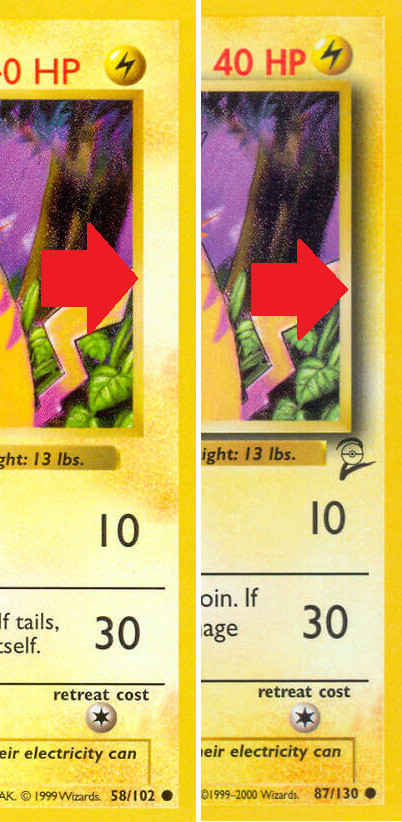 Comparison of a Shadowless Pokémon card against a standard card, highlighting the absence of a shadow effect
Comparison of a Shadowless Pokémon card against a standard card, highlighting the absence of a shadow effect
Comparison of a Shadowless Pokémon card against a standard card, highlighting the absence of a shadow effect.
3.2. Professional Grading Services
For high-value cards, consider professional grading services like PSA (Professional Sports Authenticator) or Beckett Grading Services (BGS).
- Benefits of Grading: Professional grading assesses the card’s condition and authenticity, providing a standardized grade that increases buyer confidence and value.
- Grading Process: The grading process involves sending your card to the service, where experts evaluate its condition based on centering, edges, corners, and surface.
3.3. Local Card Shops and Flea Markets
Visiting local card shops and flea markets offers opportunities for in-person appraisals and sales. These venues provide direct interaction with potential buyers.
- In-Person Appraisals: Local shops can offer immediate evaluations of your cards.
- Haggling: Flea markets allow you to negotiate prices and potentially get the best deal.
4. What is the Market Value of Pokemon Cards?
Understanding the current market trends for Pokemon cards is essential to maximize potential returns. Factors such as set popularity, rarity, card condition, and historical significance all play roles.
4.1. Factors Influencing Market Value
Market value of Pokemon cards is influenced by several factors that determine demand and price. Keeping these factors in mind can help collectors and sellers make informed decisions.
- Set Popularity: Some sets are more popular among collectors due to unique artwork, powerful cards, or nostalgia. Sets like Base Set, Team Rocket, and Neo Genesis are highly valued.
- Rarity and Scarcity: Ultra-rare cards and those with limited distribution command higher prices. Factors like first edition status, shadowless versions, and promotional releases increase scarcity.
- Card Condition: Grading services like PSA and BGS assess card condition, and higher grades fetch premium prices. Mint or near-mint cards are the most valuable.
- Historical Significance: Cards with historical significance, such as those from early sets or associated with major events, are highly sought after.
- Player Demand: Cards used in competitive play often see a spike in value due to their functional advantages. Strong trainer cards and powerful Pokémon can be very valuable.
4.2. Recent Market Trends
The Pokemon card market has experienced significant fluctuations, influenced by trends, celebrity endorsements, and economic conditions. Staying updated on these trends can help in making informed decisions.
- Surge in Demand: Recent years have seen a surge in demand fueled by social media and celebrity interest. This has driven up prices for vintage and rare cards.
- Investment Potential: Pokemon cards are increasingly viewed as alternative investments. High-grade cards are seen as assets that can appreciate over time, attracting investors.
- Online Marketplaces: Online platforms have made it easier to buy and sell Pokemon cards, increasing market transparency and accessibility.
4.3. Market Predictions
Predicting future market trends is challenging but essential for collectors and investors. Analyzing historical data, current trends, and upcoming releases can provide valuable insights.
- Vintage Cards: Vintage cards, particularly those from the 1990s and early 2000s, are expected to continue to appreciate in value. These cards have nostalgia and scarcity, making them attractive.
- New Releases: New sets with innovative mechanics and artwork can generate significant interest. Keeping an eye on upcoming releases and their potential impact on the market is important.
- Grading Trends: Cards graded by reputable services like PSA and BGS will likely maintain their value. Investing in grading can enhance the long-term worth of your collection.
5. Maximizing the Sale Value of Your Pokemon Cards
To maximize the sale value of your Pokemon cards, take a strategic approach that includes thorough preparation, choosing the right sales platform, and effective marketing.
5.1. Preparing Your Cards for Sale
Proper preparation is crucial to maximize the value of your Pokemon cards when selling them. Taking the time to clean, document, and protect your cards can make a significant difference in the final sale price.
- Cleaning: Gently clean your cards using a soft, lint-free cloth. Remove any dust or smudges to improve their appearance. Avoid using liquids or harsh chemicals, as they can damage the card’s surface.
- Documentation: Create a detailed record of each card, including its set, rarity, condition, and any unique features like first edition stamps or error prints. High-quality photos showcasing the card’s condition can also attract more potential buyers.
- Protection: Place each card in a protective sleeve or card saver to prevent scratches and bends. For high-value cards, consider using a rigid top loader for added protection.
5.2. Choosing the Right Sales Platform
Selecting the right sales platform depends on your goals, the type of cards you’re selling, and your comfort level with online transactions. Each platform has its own set of fees, policies, and target audiences.
- eBay: Ideal for reaching a large audience and selling individual cards or small lots. Be prepared to handle shipping and customer service, and consider using eBay’s authentication service for high-value cards.
- TCGPlayer: A popular choice for selling trading cards, offering a marketplace specifically for TCGs. It’s best for sellers who have a large inventory and are comfortable with grading and pricing cards accurately.
- Local Card Shops: Selling to local card shops offers the convenience of immediate payment. However, be prepared to receive a lower price than selling directly to collectors.
- Online Auctions: Platforms like Heritage Auctions and PWCC Auctions specialize in high-end collectibles. These auctions can attract serious collectors and drive up prices, but they often require professional grading and authentication.
5.3. Marketing Your Cards Effectively
Effective marketing can significantly increase interest in your Pokemon cards and drive up their value. Whether you’re selling online or in person, presenting your cards attractively can make a big difference.
- High-Quality Photos: Use good lighting and a neutral background to take clear, high-resolution photos of your cards. Showcasing the card’s condition and details can instill confidence in potential buyers.
- Detailed Descriptions: Write detailed and accurate descriptions of each card, highlighting its rarity, condition, and any unique features. Include information about the card’s history, set, and any notable attributes.
- Pricing Strategy: Research the market value of your cards and price them competitively. Consider using “buy it now” prices or setting a reserve price for auctions.
- Promotions: Offer promotions such as free shipping, discounts for multiple purchases, or bundled deals to attract more buyers. Consider running auctions or sales during peak collecting seasons.
- Engage with Buyers: Respond promptly and professionally to inquiries from potential buyers. Provide additional photos or information as needed to build trust and confidence.
5.4. Managing Risk and Fraud
Selling Pokemon cards involves certain risks, particularly when conducting transactions online. Taking steps to protect yourself from fraud and scams is essential to ensure a safe and positive selling experience.
- Secure Payment Methods: Use secure payment methods such as PayPal, which offers buyer and seller protection. Avoid accepting checks, money orders, or other forms of payment that are difficult to trace.
- Shipping Insurance: Purchase shipping insurance to protect against loss or damage during transit. Consider requiring signature confirmation for high-value shipments.
- Authentication: For high-value cards, consider using a professional authentication service to verify the card’s authenticity. This can increase buyer confidence and prevent disputes.
- Reporting Suspicious Activity: Be vigilant for suspicious behavior, such as requests to ship to a different address or attempts to negotiate prices outside the platform. Report any suspicious activity to the sales platform and law enforcement if necessary.
By following these strategies, you can maximize the sale value of your Pokemon cards and turn your collection into a profitable investment.
6. How Do Printing Errors Affect Value?
Printing errors on Pokemon cards can significantly impact their value, turning an otherwise ordinary card into a sought-after collector’s item. These errors range from minor misprints to significant production flaws, each with its own level of rarity and appeal.
6.1. Types of Printing Errors
Understanding the types of printing errors that can occur on Pokemon cards is essential for identifying potential high-value cards.
- Misprints: Misprints refer to errors in the printing process that result in incorrect colors, blurred images, or missing details. Common examples include cards with faded ink, double images, or misalignment of the printing layers.
- Miscuts: Miscuts occur when the card is not cut correctly during production, resulting in portions of other cards being visible on the edges or corners. Extreme miscuts, where the card is significantly off-center, are particularly rare and valuable.
- Ink Errors: Ink errors involve variations in the ink used during printing, such as missing ink layers, incorrect ink colors, or ink smudges. These errors can create unique visual effects that make the card stand out.
- Text Errors: Text errors include spelling mistakes, grammatical errors, or incorrect information printed on the card. These errors can range from minor typos to significant factual inaccuracies.
- Holographic Errors: Holographic errors involve issues with the holographic foil layer on the card, such as missing foil, misaligned foil patterns, or holographic distortions.
6.2. Examples of High-Value Error Cards
Several notable error cards have gained significant value in the collector’s market due to their rarity and unique characteristics.
- “Stage Error” Blastoise: A 1999 Base Set Blastoise card missing the word “Stage” in the upper right corner is a prime example of a text error that has become highly valuable.
- “No Damage” Error Cards: Some early Pokemon cards were printed with the phrase “No Damage” instead of a damage value, making them highly sought after by collectors.
- Misaligned Holo Patterns: Cards with misaligned holographic patterns, where the foil does not line up correctly with the artwork, can fetch significant prices due to their visual uniqueness.
6.3. Factors Influencing Error Card Value
Several factors influence the value of error cards, including the type of error, the rarity of the card, and the overall condition of the card.
- Rarity: The rarer the error, the higher the value of the card. Errors that occur on common cards may be less valuable than those found on rare or holographic cards.
- Severity: The more significant the error, the more desirable the card may be to collectors. Extreme miscuts, major misprints, and obvious text errors tend to be more valuable.
- Condition: As with all collectible cards, the condition of the error card plays a significant role in its value. Cards in mint or near-mint condition will fetch the highest prices.
- Demand: The popularity of the Pokemon featured on the card can also influence its value. Error cards featuring popular Pokemon like Charizard, Pikachu, or Mewtwo may be more desirable.
6.4. Where to Find and Sell Error Cards
Finding and selling error cards can be a rewarding experience, but it requires careful research, attention to detail, and the right sales platform.
- Research: Familiarize yourself with common error types and specific examples of high-value error cards. Use online resources, collector forums, and price guides to stay informed about market trends and values.
- Inspection: Carefully inspect your Pokemon card collection for any signs of printing errors. Use a magnifying glass and good lighting to examine the cards closely for misprints, miscuts, ink errors, and text errors.
- Authentication: If you believe you have found a valuable error card, consider having it authenticated by a professional grading service like PSA or BGS. Authentication can increase buyer confidence and ensure you receive a fair price.
- Sales Platforms: Choose a sales platform that caters to collectors and offers secure payment options. Online marketplaces like eBay and TCGPlayer are popular choices, as well as auction houses specializing in collectibles.
7. What Role Does Card Grading Play?
Card grading is a critical process in determining the value and authenticity of Pokemon cards. Professional grading services assess the condition of a card based on several factors and assign a numerical grade, providing buyers and sellers with a standardized measure of quality.
7.1. Benefits of Card Grading
Having your Pokemon cards professionally graded offers several benefits that can significantly impact their value and marketability.
- Standardized Assessment: Professional grading services use standardized criteria to assess the condition of a card, providing a consistent and objective measure of quality.
- Increased Value: Graded cards often fetch higher prices than ungraded cards, as the grade provides buyers with confidence in the card’s condition and authenticity.
- Protection: Grading services encapsulate cards in protective cases, safeguarding them from damage and preserving their condition over time.
- Authentication: Grading services authenticate cards, ensuring they are genuine and not counterfeit. This is particularly important for high-value cards.
- Marketability: Graded cards are easier to sell, as buyers know exactly what they are getting and are more willing to pay a premium for the assurance of quality.
7.2. Grading Services
Several reputable grading services specialize in assessing the condition and authenticity of Pokemon cards.
- PSA (Professional Sports Authenticator): PSA is one of the most recognized and respected grading services in the industry. They assess cards based on centering, edges, corners, and surface, assigning grades from 1 (Poor) to 10 (Gem Mint).
- BGS (Beckett Grading Services): BGS is another leading grading service known for its stringent grading criteria and detailed assessment reports. They assign grades from 1 (Poor) to 10 (Pristine), with subgrades for centering, edges, corners, and surface.
- CGC (Certified Guaranty Company): CGC is a well-regarded grading service that also grades comic books and other collectibles. They use a similar grading scale to PSA, assigning grades from 1 (Poor) to 10 (Gem Mint).
7.3. Factors Considered in Grading
Grading services consider several factors when assessing the condition of a Pokemon card, each of which can impact the final grade assigned.
- Centering: Centering refers to how well the artwork is aligned on the card. A well-centered card has equal borders on all sides.
- Edges: Edges refer to the condition of the card’s edges. Sharp, clean edges are preferred, while frayed or worn edges can lower the grade.
- Corners: Corners refer to the condition of the card’s corners. Sharp, undamaged corners are preferred, while rounded or chipped corners can lower the grade.
- Surface: Surface refers to the overall condition of the card’s surface. A clean, smooth surface free of scratches, dents, or other imperfections is preferred.
7.4. How to Prepare Cards for Grading
Preparing your Pokemon cards for grading can increase their chances of receiving a high grade and maximizing their value.
- Cleaning: Gently clean your cards using a soft, lint-free cloth to remove any dust or smudges. Avoid using liquids or harsh chemicals.
- Inspection: Carefully inspect each card for any flaws, such as scratches, dents, or creases. Use a magnifying glass and good lighting to examine the cards closely.
- Protection: Place each card in a protective sleeve or card saver to prevent further damage during handling and shipping.
- Research: Research the grading criteria used by your chosen grading service and assess your cards accordingly.
- Submission: Follow the grading service’s submission guidelines carefully, providing accurate information about each card and paying the required fees.
8. What Are the Most Valuable Pokémon Cards Ever Sold?
The market for Pokemon cards is constantly evolving, with certain cards achieving record-breaking prices that capture the attention of collectors and investors worldwide. These top-tier cards represent the pinnacle of rarity, condition, and historical significance.